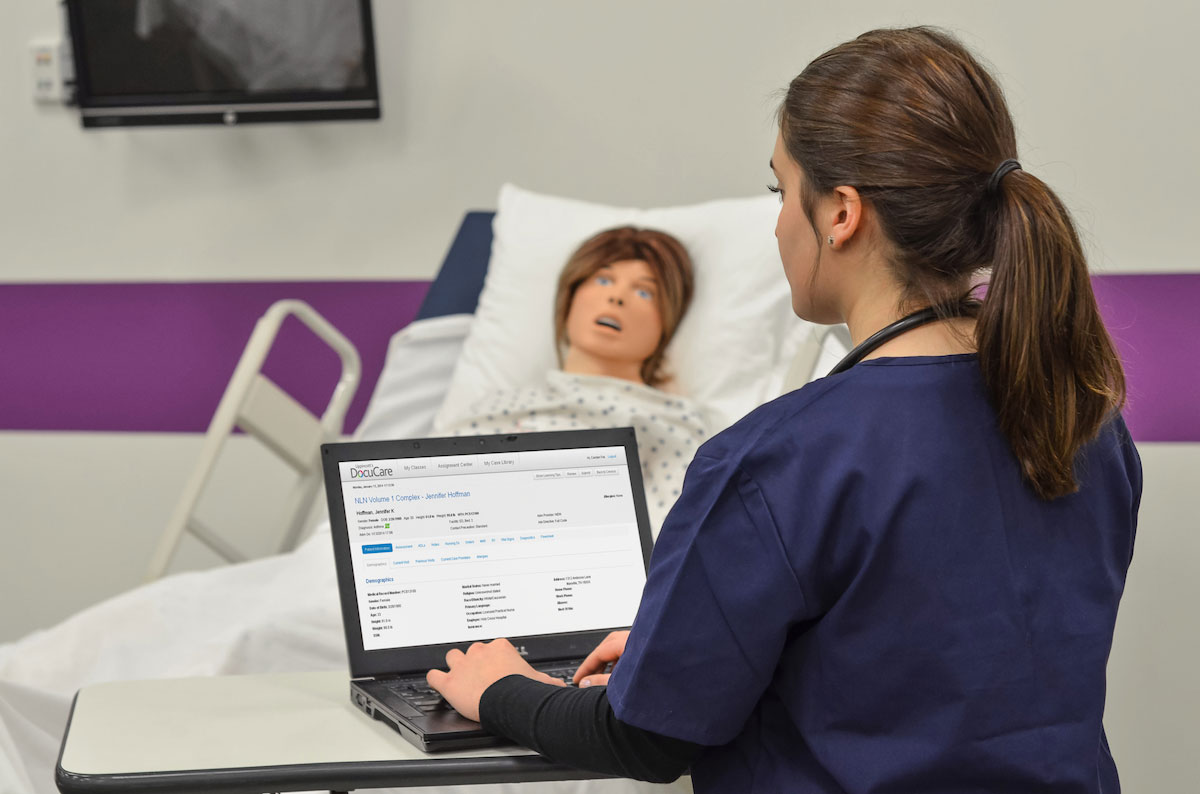A path to student success
Self-directed learning
Learning your own way
Supported self-directed learning addresses the need that many institutions have for additional clinical practice that may be lacking due to a shortage of time or facilities, or for programs teaching in a distance learning environment.
Providing a safe, controlled and measurable experience is essential to student success. With self-directed learning, students can gain the experience they need using realistic patient scenarios to develop critical decision-making skills.

Self-directed learning provides a unique opportunity for learners to interact with a patient in a safe, realistic environment available anytime, anywhere. Research evidence suggests the efficacy of simulation-based education when practice is deliberate and the achievement of specific clinical goals is determined.
A Path to Training Success
Learning and retaining lifesaving skills requires repetitive practice and staying updated on best practices and research-based evidence in medical care. Participating in traditional instructor-led courses is time-consuming and can be logistically challenging for some learners.
Self-directed learning programs provide more flexibility than traditional educational methods because learners are free to choose when and where to participate. Without logistical constraints, learners have a greater opportunity to perform the desired low-dose, high-frequency training routine that best enables competency development.
Improves training effectiveness
- Standardizes educational content
- Standardizes training methodology
- Standardizes performance measures
Improves training efficiency
• Improves availability and quality of classroom time by allowing instructors to focus on highest educational priorities
• Helps instructors identify student needs and optimize their programs
• Students learn with less instructor time
• Realistic simulations hone students' psychomotor and cognitive skills.
Improves student learning experience and motivation
- Rich content, immersive simulations and game-like challenges engage today’s students
- Students learn at their own pace in a non-intimidating environment
- Enables students to experience abnormal, difficult encounters
Multi-level applicability
• Professional undergraduate education
• Initial education
• Continuing education
• Remediation and recertification

The future of teaching
Self-directed learning programs hold promise as the educational delivery systems of the future. Flexible and scalable, self-directed learning solutions guide the learners through complete courses of study by facilitating knowledge acquisition and enhancement of skills in a progressive manner that helps build competence and confidence.
By enabling learners to progress at their own pace and convenience, learners can achieve their educational goals in the most optimal way. Case scenarios, simulations, automated debriefing, remediation, and rich educational content enables students to master all aspects of self-direct learning using simulation.
How Laerdal can help
Laerdal's self-directed learning programs are designed to provide the highest level of educational quality, clinical accuracy, and cost efficient delivery methods necessary to meet the educational goals of healthcare providers around the world.
